ANATOMY OF A COIN
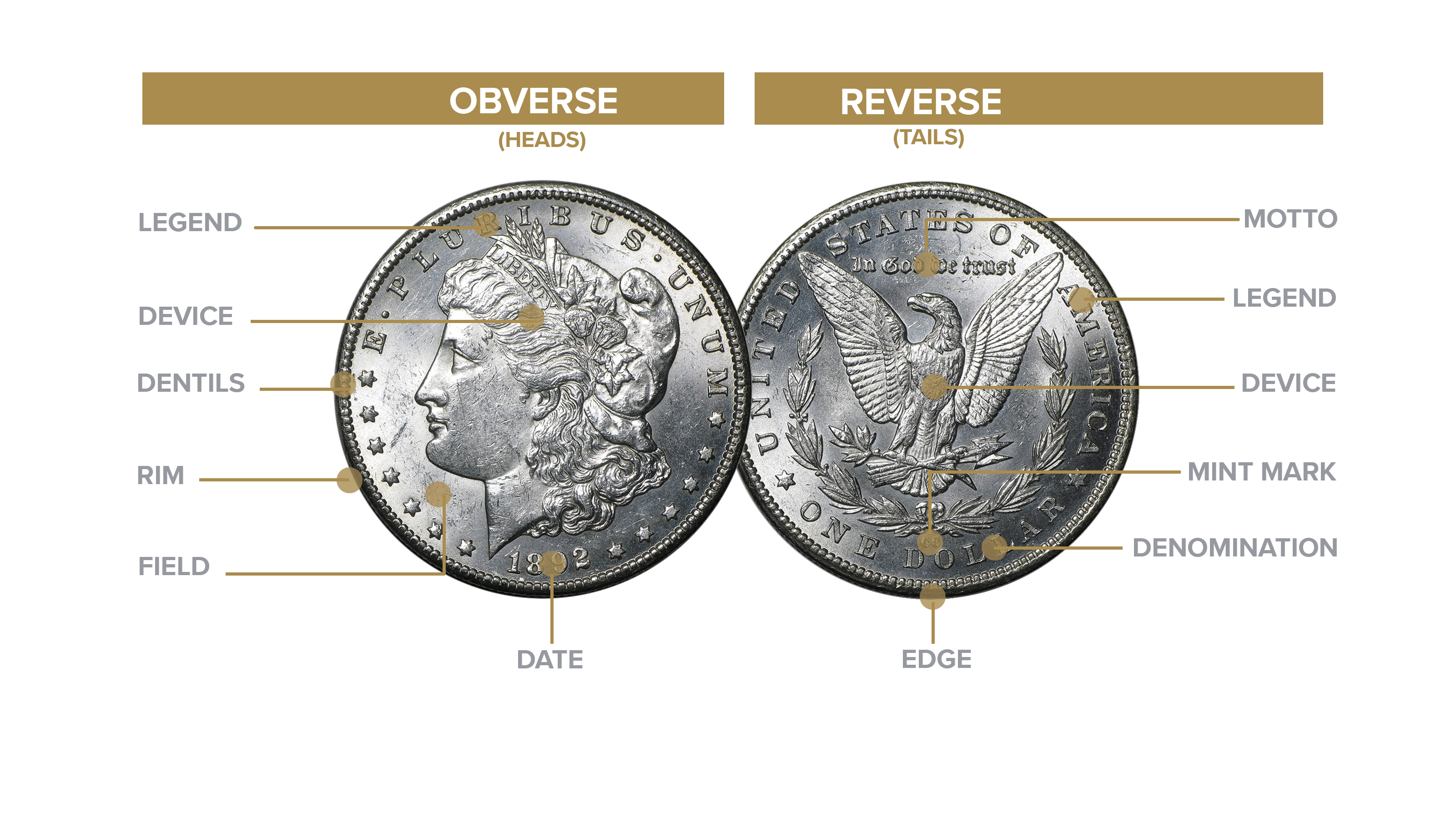 Obverse – The obverse is the “heads” side of the coin. It almost always is the dated side of the coin and usually depicts the bust (or head) of a President, significant individual or a representation of Liberty.
Obverse – The obverse is the “heads” side of the coin. It almost always is the dated side of the coin and usually depicts the bust (or head) of a President, significant individual or a representation of Liberty.
Reverse – The reverse is referred to as the “tails” side. It usually displays the denomination of the coin. On U.S. coinage the reverse often has an eagle, significant building pertaining to the obverse depiction or allegorical imagery such as a laurel wreath.
Legend – Both obverse and reverse usually have some wording in the peripheries. These are referred to as either obverse legend (in this case E PLURBIS UNUM) or reverse legend (UNITED STATES OF AMERICA), the word LIBERTY is also used on U.S. coinage.
Device – A device is any raised element on the surface of a coin. The main device is referred to as the central device, but legends and mottos are also devices.
Dentils – Also called denticles, these refer to the tooth-like bumps bordering the rims on many earlier U.S. coinages. These served several purposes. They aided milling by widening the edges. They were decorative adding the perception of thickness and depth of design. They facilitated stacking.
Rim – The raised periphery of the coin located along the edge protecting the design elements from wear.
Field – The field is the flat or concave smooth surface area between the central devices, date and any legends, stars or mottos along the margins.
Motto – Is a legislated maxim inscribed on either obverse or reverse of a coin. U.S. coins have IN GOD WE TRUST and/or E PLURBIS UNUM as dictated by specific coinage legislation for each denomination.
Edge – Not visible in the example image, the edge is sometimes referred to as the third side of a coin. The edge is the term used to describe the area between rims of the obverse and reverse. On U.S. coinage it can either be plain, reeded, lettered or starred.
Mint Mark – The mint mark is small lettering that denotes the facility in which the coin was produced. United States coinage uses P, D, S, W, O, CC, D, or C for Philadelphia, Denver, San Francisco, West Point, New Orleans, Carson City, Dahlonega and Charlotte respectively. U.S. coinage lacking this marking defaults to Philadelphia the city of the original Mint facilities.
Denomination – All coinage since the late nineteen century feature an inscription expressing the face value of a coin. Some early U.S. coinage lacks this device.
U.S. Coins and Jewelry are members of the two most trusted coin grading companies:
- NGC in Sarasota, FL
- PCGS in Newport Beach, CA
Coin Grading Scale Made Simple
Coin grading standards were adopted in the 1970s by the ANA from the first coin grading scale called “the Sheldon scale,” which was used for Large Cents. This scale encompasses traditional terms such as Good, Fine, Extra Fine, & Uncirculated and assigns a numerical value in which to compare to other coins of the same type. The scale starts with PO 1 Poor and continues up to Mint state coins, which runs from MS 60 to a perfect coin in a MS 70.
COIN GRADING SCALE
The value of collectibles is a combination of demand, rarity and condition. In rare coins the value can be complicated to determine, but it is not as difficult as many make it to be. The inherent rarity is tied to mintage figures and survival rates much of which can be obtained through Mint records and modern third-party grading service data. The demand varies from series to series and changes over time. But the most important variable in the value equation is the condition.
Determining the condition of coins or “grading” is a scientific based art, and requires some study. But, it is easily understood and practiced with research and study. Grading standards have changed with the industry, but during the last three decades a numeric 70 point scale has been refined and become the standard. Every series has particular characteristics that define how the coin’s grades are determined. In this article we will breakdown the various numeric grade ranges and the terms that define them. These are not meant to be comprehensive standards, but rather a base for further study in design specific grading. We will work to expand on individual series grading in future articles.
THE BASICS
There are four gross conditions in the modern grading scale – poor, good, fine and uncirculated. All points along the 70 point scale fall within these terms and each is divided into various levels. Adjectives are supplied to further delineate within each condition. While every series has particular attributes that define where a coin will fall within this scale, basic tenets apply.
(PO) POOR 01 – Heavily worn but identifiable. This is not a mutilated coin, but rather one that is worn virtually smooth. This is also referred to as BASAL STATE.
POOR 02 – Worn smooth but with some main detail visible, usually just outline of a central motif. The rims are worn smooth and well into or completely across peripheral lettering and/or stars.
(AG) ABOUT GOOD 03 – Coins at this level will be heavily worn but as much as half detail and lettering will remain visible. These should include some of the rim dentils or detail, and edge lettering or reeding will be intact but show wear.
(G) GOOD 04, 06 – The common GOOD grades will have obvious wear on the rims and should show at least partial lettering with all high points exhibiting some wear. Overall, it will have just a little detail across central devices with some portions worn smooth.
(VG) VERY GOOD 08, 10 – These coins will have major design elements visible but with wear across surfaces, and central motifs lacking detail. The high points are still significantly worn and flat, but with much of the design visible.
(F) FINE 12, 15 – Coins in these grades will show the entire design clearly. Moderate to heavy wear will be evident on the high points. The rim and peripheral lettering will be complete.
(VF) VERY FINE 20, 30, 35 – These examples will have most detail with just the highest details worn smooth. Some luster may be present, but only in and around design elements.
(XF or EF) EXTRA FINE 40, 45 – At this level all detail will be visible with some light wear visible to the naked eye. Luster will be present but somewhat lacking in the open portion of the fields and across the highest points of the design.
(AU) ABOUT UNCIRCULATED 50, 53, 55 – AU coins have full detail and luster with just slight wear on the highest points of the design. Some scattered contact marks can be present but just the slightest
ABOUT UNCIRCULATED 58 – Only examples with full luster except miniscule wear at just the highest points. Often coins in this grade have just slight friction from vintage coin cabinet drawer or insignificant previous collector
(MS) MINT STATE 60- 64 – Due to the mintage process MINT STATE coins come into contact with each other causing marks across the surfaces. This is not the same as wear which shows as a flattening of the metal flow lines that causes the worn areas to dull. Coins in these grades will have full luster across fields and devices but in the lower grades will show significant contact. While the marks exist, full luster will be present and is key in the determination. In the uncirculated grades each coin has an area of concentration such as a cheek or eagle’s breast. Marks in these areas are more detrimental to grades than ones that occur in the more hidden regions of a coin’s surface.
MINT STATE 65 -67 – Coins in this range are considered GEM and will be fully lustrous with minimal marks in main field or on the central devices. Some varying degrees of contact will still be evident, but nothing to numerous, heavy or distracting.
MINT STATE 68, 69 – These coins are approaching pristine but may show some hairlines or very minimal contact in the fields or on the devices. Coins in these upper grades will look virtually perfect in hand with no more than a few minor contact marks hidden in detail or surfaces.
MINT STATE 70 – Ideally this is a perfect coin. Some modern examples grade MS70 with a light hairline. These coins should have no visible contact to the naked eye.
The grading standards listed above apply loosely across all U.S. minted coins with each individual series possessing unique attributes that are used to the identify the grade within their respective series. It is important to mention that significant damage, mutilation and corrosion do not qualify as wear or contact in this discussion. With some older series strike characteristics are an issue. It is relevant to note that weakness in strike is not wear and softly struck areas should still have some luster. Please note that something we see way too much and while preservation is sometimes performed by numismatic professionals, any cleaning is damage and destroys the surfaces of the coin. NEVER CLEAN YOUR COINS!
U.S. Coins and Jewelry uses the contemporary standard grading guides to determine the grades of our coins. We rely on the top certification services to provide confidence and security for collectors when feasible. For coins that are not certified, our experts work tirelessly to accurately grade every item. If you have a question or a concern feel free to discuss it with our qualified staff. We know that numismatics is an ever growing field of study and strive to continually expand our own knowledge. More importantly, we are eager to help our clients expand on theirs.
United States coins are most often graded with the American Numismatic Association (ANA) grading scale. The ANA is a non-profit group created in 1891 and chartered by Congress since 1912.
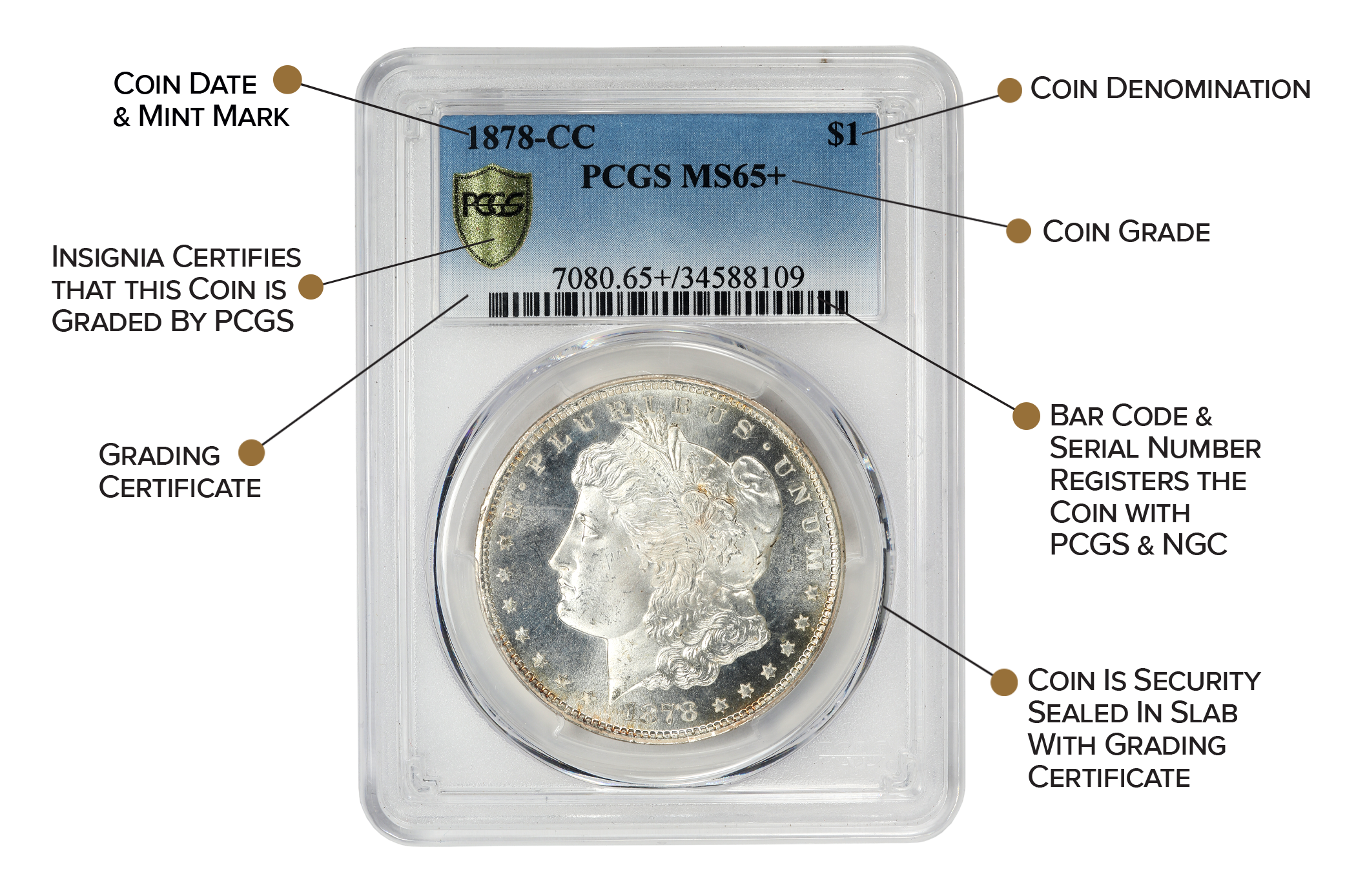 ANATOMY OF A CERTIFIED COIN
ANATOMY OF A CERTIFIED COIN
Grading, which is also called certifying, slabbing, holdering, rating, or encapsulating, is when an independent third party views a coin (in person) and gives it a numerical grade. US Coins are graded on a scale from 1 to 70 based on condition. The higher the grade, the more the coin’s value.
Coins are valued based on their rarity and condition. The nicer the condition, the more the coin’s value. When a dealer is selling a coin, they want the buyer to understand the coin’s worth. Coin grading services came into existence in the 1980s. They offer unbiased opinions on the condition of coins. The two largest grading services, NGC and PCGS, have graded almost 70 million coins since they opened. They don’t appraise the coins or assign them a value. The graders simply give the coins a numerical grade and it is then up the market to decide the coin's value.
Why Get Coins Graded
Coins are valued based on their rarity and condition. The nicer the condition, the more the coin’s value. When a dealer is selling a coin, they want the buyer to understand the coin’s worth. Coin grading services came into existence in the 1980s. They offer unbiased opinions on the condition of coins. The two largest grading services, NGC and PCGS, have graded almost 70 million coins since they opened about 30 years ago. They don’t appraise the coins or assign them a value. The graders simply give the coins a numerical grade, and it is then up the market to decide what the coin is worth.
Getting a coin graded doesn’t automatically make it worth more. The biggest misconception about grading is that grading a coin makes it automatically worth more than if it were ungraded. As an example, if you have a nice looking VF Walking Liberty, it doesn’t become worth more just because PCGS calls it a VF 35 and puts it in a holder. There are certain extreme levels where a coin gets an especially high grade, and it is suddenly worth much more than if it was ungraded. However, the majority of coins are graded just so the buyer and seller can comfortably agree to a value based on prior sales prices of coins in the same grade.
Not All Coins Are Worth Grading
The most common question we get from first time buyers and sellers is, “should I get my coin graded?” The real answer is it depends on what the coin is currently worth and what it would be worth once graded. Our advice is to only get coins graded if you think the cost of grading is less than how much extra value grading will add to the coin. At U.S. Coins and Jewelry, we can help you appraise the coin, so you understand if the coin’s value will increase with grading.
How Much Does Grading With PCGS or NGC Cost?
In order to send a coin to NGC or PCGS, you first must pay to be a member of their submission club. In addition to a paid membership, you will also pay a fee per coin. The more valuable the coin, the more it costs for graded. When determining if the cost of grading makes sense, you also need to factor in shipping and insurance expenses to get the coin to the grading service and back. The grading service will most likely have the coin in their possession for a couple of weeks. So while sometimes grading can be a great decision, you still want to make sure the time and money involved is going to pay off. At U.S. Coins and Jewelry, we can help you appraise the coin, so you understand if the coin’s value will increase with grading.
Buy Coins Online from U.S. Coins and Jewelry
 Obverse – The obverse is the “heads” side of the coin. It almost always is the dated side of the coin and usually depicts the bust (or head) of a President, significant individual or a representation of Liberty.
Obverse – The obverse is the “heads” side of the coin. It almost always is the dated side of the coin and usually depicts the bust (or head) of a President, significant individual or a representation of Liberty.
 ANATOMY OF A CERTIFIED COIN
ANATOMY OF A CERTIFIED COIN











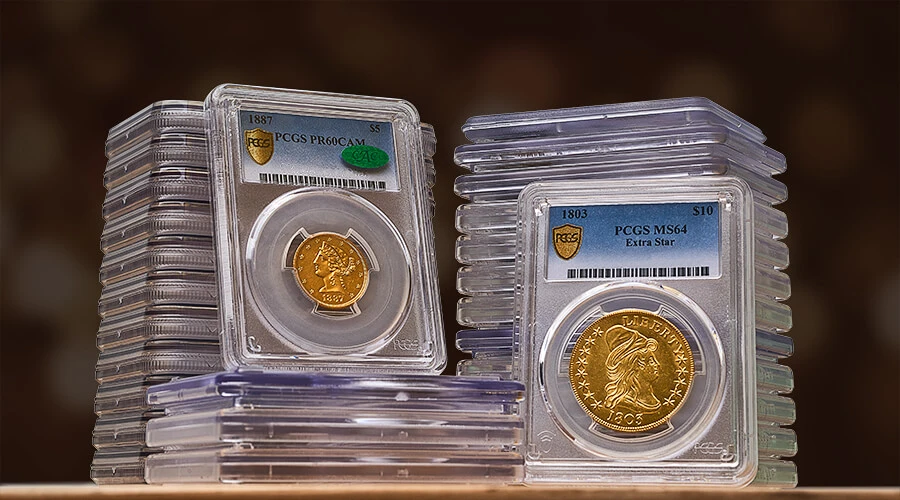



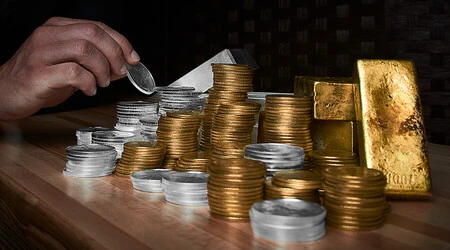








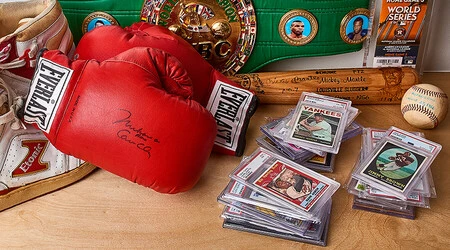






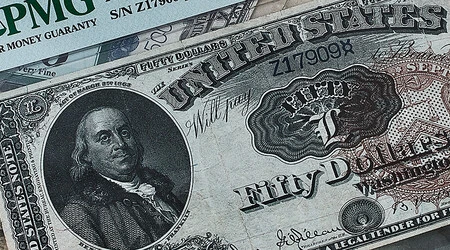



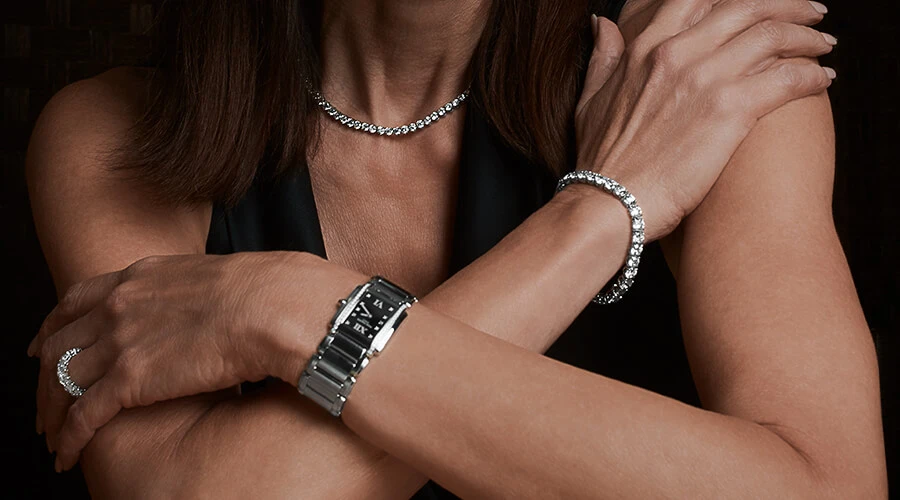
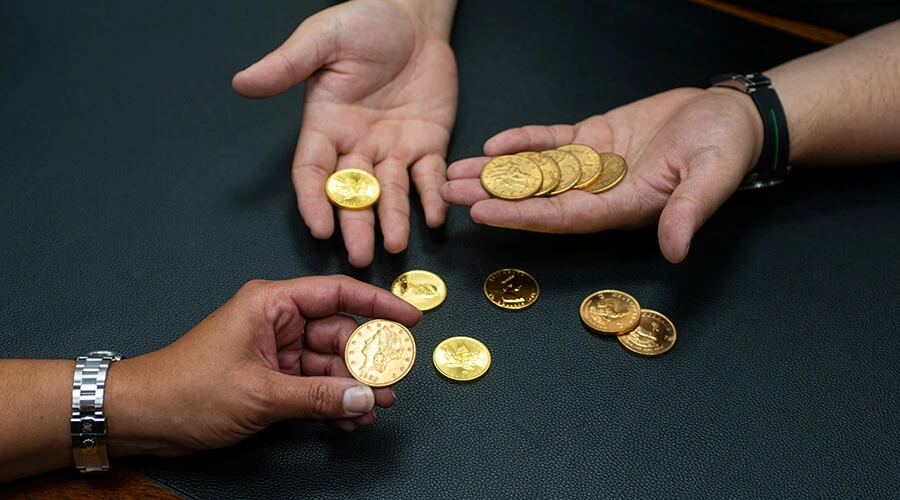
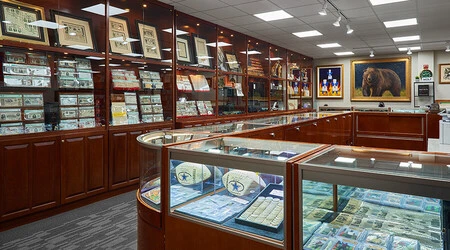

 ANATOMY OF A CERTIFIED COIN
ANATOMY OF A CERTIFIED COIN





